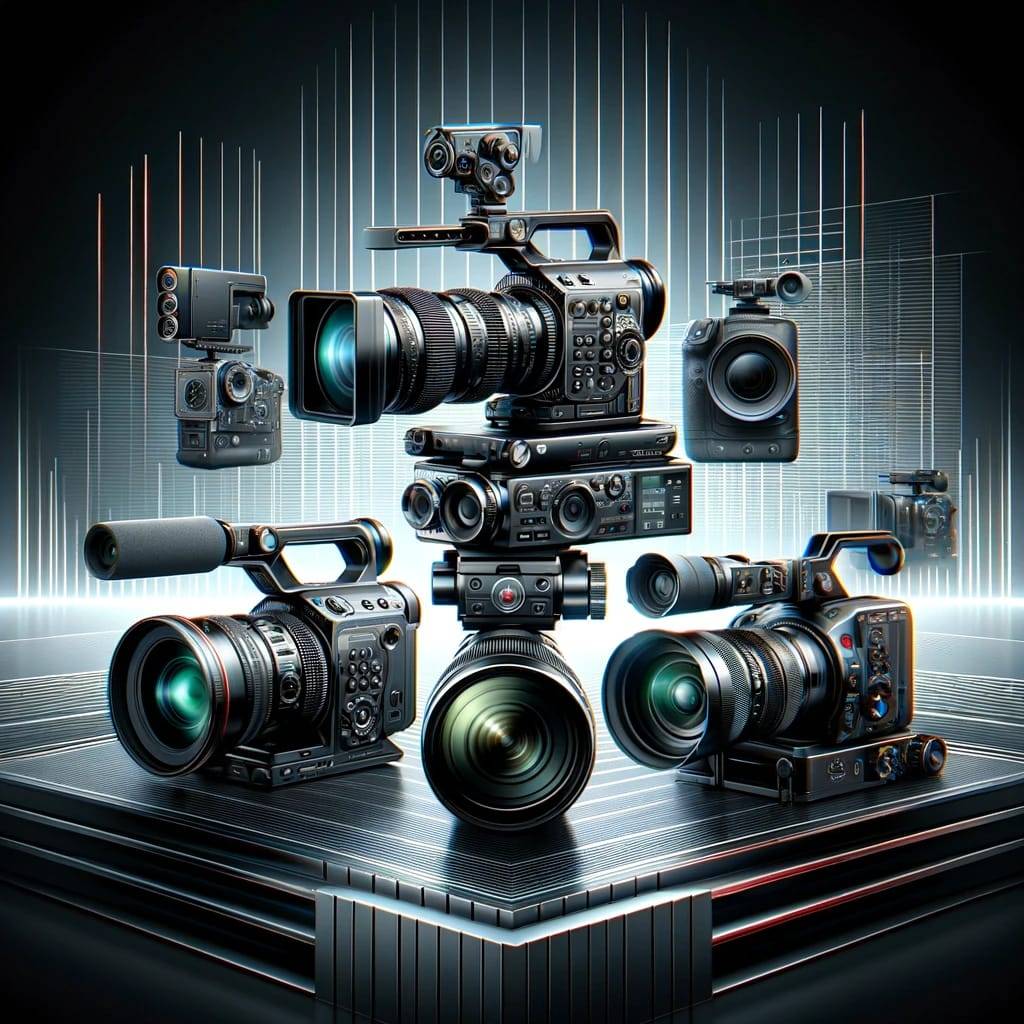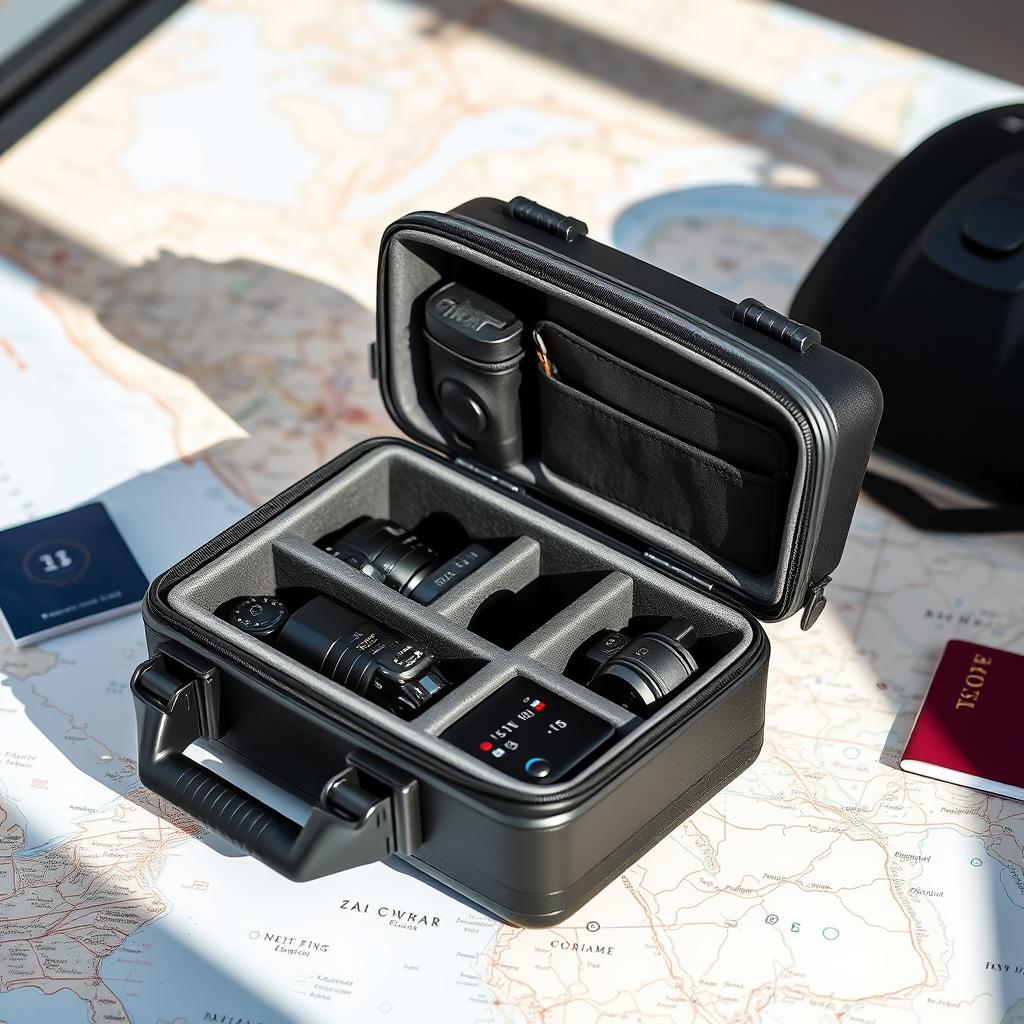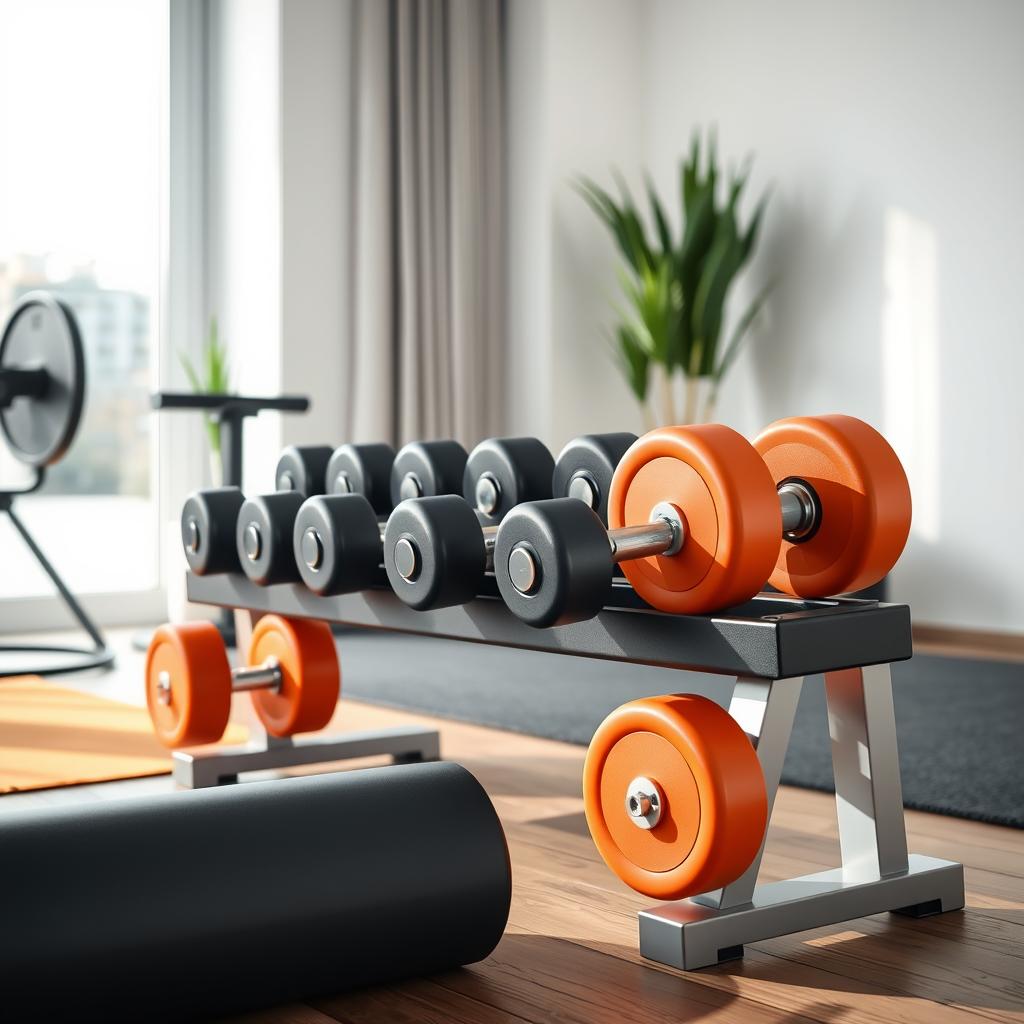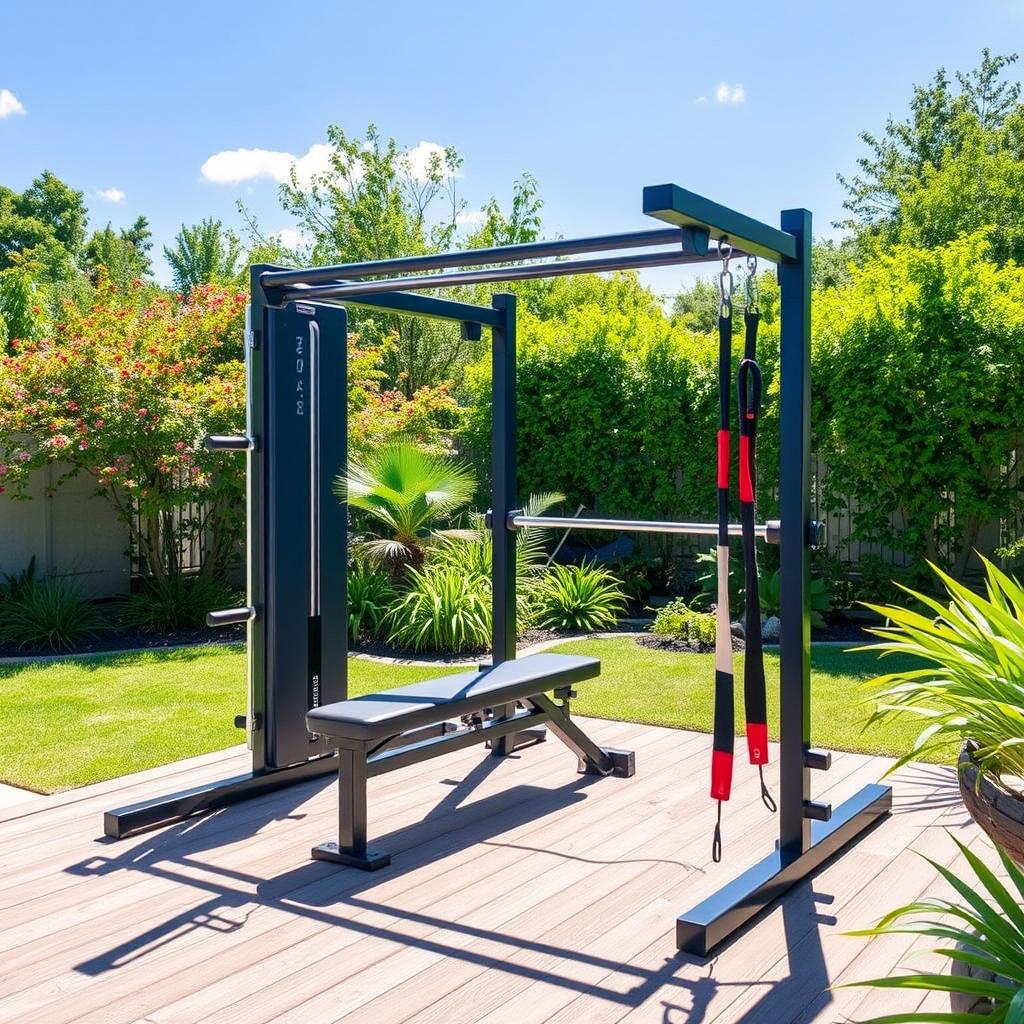Introduction
This comprehensive guide examines the top five professional video cameras, including in-depth reviews, use cases, accessory recommendations, and comparative analysis for each camera.
1. Canon EOS C300 Mark III
In-Depth Review
When discussing professional video cameras, the Canon EOS C300 Mark III invariably stands out as a flagship model. This camera is not just a simple upgrade from its predecessors but a complete overhaul that sets new standards in the world of professional videography.
Key Features
- Super 35mm Dual Gain Output Sensor: The heart of the C300 Mark III, this sensor, offers over 16 stops of dynamic range. It’s specially designed to capture detailed images with rich, accurate colors, even in extreme lighting conditions.
- 4K 120p and 2K Crop 180p Recording: High frame rate recording in 4K makes this camera a powerhouse for capturing smooth, detailed slow-motion footage, a crucial aspect for modern filmmaking.
- Dual Pixel CMOS AF: Canon’s advanced autofocus technology ensures sharp focus, a pivotal factor in professional video production.
Pros
- Excellent dynamic range and color accuracy
- Versatile for studio and field work
- Robust build quality
Cons
- Higher price point
- Complexity for beginners
Use Cases
Ideal for high-end productions, documentaries, and studio work, offering flexibility in various shooting environments.
This camera is adept at handling a range of filming scenarios. From high-end studio productions to dynamic field reporting, its versatility is unmatched. Whether it’s a cinematic piece or a documentary, the C300 Mark III delivers consistently.
Accessories
The modular design of the EOS C300 Mark III allows for extensive customization. Adding accessories like Canon EF lenses, matte boxes, and external monitors is seamless, enhancing its functionality in diverse shooting environments.
Comparative Analysis
When compared to other professional video cameras in the market, the Canon EOS C300 Mark III stands tall with its superior image quality and flexibility. It is particularly notable for its color science, making it a favorite for cinematographers who prioritize color grading in their workflow.
2. Sony FX6
In-Depth Review
The Sony FX6 stands as a beacon of innovation in the professional video camera market, blending portability with powerful capabilities. It’s a testament to Sony’s commitment to providing cutting-edge technology for filmmakers.
Key Features
- 4K Full-Frame 10.2MP CMOS Exmor R Sensor: The FX6’s sensor is a marvel, offering exceptional detail and depth in every frame. This full-frame sensor is particularly adept at low-light filming, ensuring clarity even in challenging lighting conditions.
- DCI 4K60p and UHD 4K120 Recording: High frame rates in 4K are a boon for creatives looking to capture smooth, detailed slow-motion footage, enhancing the visual storytelling.
- 15+ Stops of Dynamic Range in S-Log 3 EI: This extensive dynamic range is key for filmmakers who need to capture a wide gamut of tones from bright highlights to deep shadows.
Pros
- Unprecedented 12K resolution
- Versatile for various productions
- Good value for the features
Cons
- Demands high-end post-production setup
- Large file sizes
Use Cases
The Sony FX6 is an ideal choice for a variety of filming contexts. Its lightweight design makes it perfect for handheld shooting, guerrilla filmmaking, and documentary work. The camera’s robustness and adaptability also make it suitable for studio setups and commercial shoots.
Accessories
With its E-mount lens system, the FX6 offers immense flexibility in lens choice, catering to a broad spectrum of filming styles and requirements. Additionally, its compatibility with external recorders and monitors makes it a versatile tool in a filmmaker’s arsenal.
Comparative Analysis
Against the backdrop of professional video cameras, the Sony FX6 distinguishes itself with its exceptional low-light performance and compact form factor. It offers a unique balance, providing high-end capabilities in a more accessible and mobile package.
3. Blackmagic URSA Mini Pro 12K
In-Depth Review
The Blackmagic URSA Mini Pro 12K is a groundbreaking camera in the professional video camera segment, offering an astonishing 12K resolution that sets a new benchmark in digital cinematography.
Key Features
- 12K Super35 HDR CMOS Sensor: This sensor is a game-changer, delivering an astounding level of detail and clarity. It’s ideal for high-end production work, particularly where post-production work, such as cropping and zooming, is required without loss of detail.
- 12K 17:9 up to 60 fps Recording: The ability to record at such high resolutions and frame rates opens up new possibilities for visual storytelling, providing ultra-high-definition slow-motion and time-lapse capabilities.
- User-Changeable PL Lens Mount: This feature offers significant flexibility in lens choices, catering to various production needs and styles.
Pros
- Unprecedented 12K resolution
- Versatile for various productions
- Good value for the features
Cons
- Demands high-end post-production setup
- Large file sizes
Use Cases
The URSA Mini Pro 12K is designed to excel in a variety of filming scenarios. Its high resolution and dynamic range make it suitable for feature films, high-end commercials, and broadcast productions. Its robust build also allows for use in more demanding outdoor environments.
Accessories
Key accessories for the URSA Mini Pro 12K include a wide range of PL mount cinema lenses, external storage solutions for managing large file sizes, and high-quality monitors for precise on-set viewing.
Comparative Analysis
In comparison to other professional video cameras, the URSA Mini Pro 12K stands out for its unparalleled resolution and image quality. It offers capabilities often reserved for much higher-priced cinema cameras, making it a unique offering in the market.
4. Panasonic Lumix BS1H
In-Depth Review
The Panasonic Lumix BS1H emerges as a formidable contender in the professional video camera landscape, offering a compelling blend of full-frame sensor capabilities and versatile functionality in a compact form.
Key Features
- 24.2MP Full-Frame MOS Sensor: The BS1H’s full-frame sensor is adept at capturing high-resolution, detailed footage with exceptional clarity. Its performance in various lighting conditions is noteworthy, particularly in low light scenarios.
- Up to 5.9K Recording: This high-resolution recording capability ensures that the footage retains intricate details, making it suitable for high-end productions where post-production flexibility is crucial.
- Dual-Native ISO and V-Log L: The dual-native ISO extends the camera’s versatility in challenging lighting conditions, while V-Log L provides a wide dynamic range and color grading flexibility.
- Versatility in Use
Pros
- High-quality video with great dynamic range
- Suitable for studio and location filming
- More affordable
Cons
- Limited autofocus capability
- Lesser-known in the professional market
Use Cases
The Panasonic Lumix BS1H is a versatile tool, suitable for a wide range of applications from cinematic productions to documentary filmmaking. Its compact size makes it an excellent choice for filmmakers who require mobility without compromising on image quality.
Accessories
The camera’s L-mount system offers compatibility with a wide array of lenses, enhancing its adaptability. Additional accessories like external recorders, monitors, and stabilizing rigs further expand its usability in diverse filming environments.
Comparative Analysis
In the realm of professional video cameras, the Lumix BS1H stands out for its unique combination of a powerful full-frame sensor and a compact, modular design. It offers a level of versatility and image quality that is hard to match at its price point.
5. RED KOMODO 6K
In-Depth Review
The RED KOMODO 6K marks its territory in the professional video camera market as a compact yet powerful device, embodying RED’s renowned cinematic image quality in a more accessible format.
Key Features
- 19.9MP Super35 Global Shutter CMOS: This sensor ensures high-quality footage with minimal rolling shutter effect, crucial for fast-paced action shots and dynamic camera movements.
- Up to 6K40 and 4K60 Recording: The KOMODO’s ability to record at 6K resolution provides filmmakers with crisp, detailed footage, suitable for high-resolution outputs and post-production cropping.
- Compact, All-in-One Design: Despite its small size, the KOMODO doesn’t compromise on performance, offering the same color science and dynamic range RED cameras are known for.
Pros
- Excellent dynamic range and image quality
- Compact and light for its capabilities
- Superior RED color science
Cons
- High cost with additional accessories
- Steeper learning curve for new users
Use Cases
The KOMODO 6K is particularly appealing for its versatility. It’s as suited for high-end cinema productions and commercial shoots as it is for indie films and documentary work, thanks to its compact size and robust capabilities.
Accessories
The camera’s RF mount offers compatibility with a range of lenses, and its modular design allows for easy integration of additional gear like monitors, wireless control modules, and professional audio equipment.
Comparative Analysis
In comparison to other professional video cameras, the RED KOMODO 6K stands out for combining high-end cinematic capabilities with a user-friendly, compact form factor. It’s a unique offering in the market, bringing RED’s advanced imaging technology to a wider range of filmmakers.
Conclusion
This guide provides a thorough analysis of the top professional video cameras, considering their features, strengths, and ideal usage scenarios. These cameras are selected for their ability to meet the diverse needs of filmmakers, from indie projects to high-end commercial productions, ensuring that professionals can make well-informed decisions for their specific filmmaking requirements.







